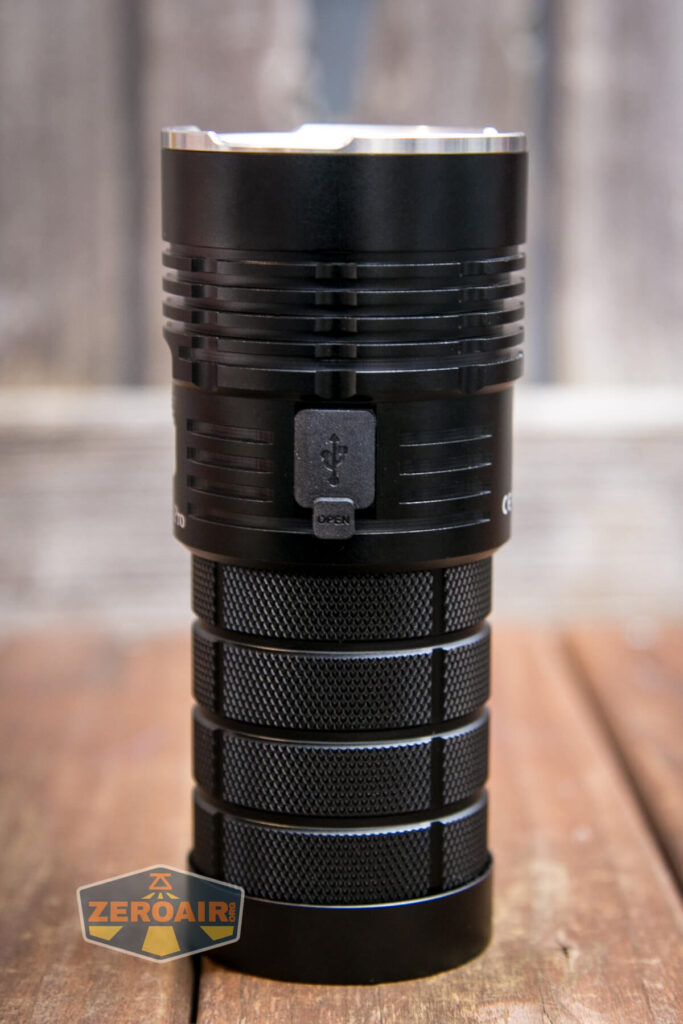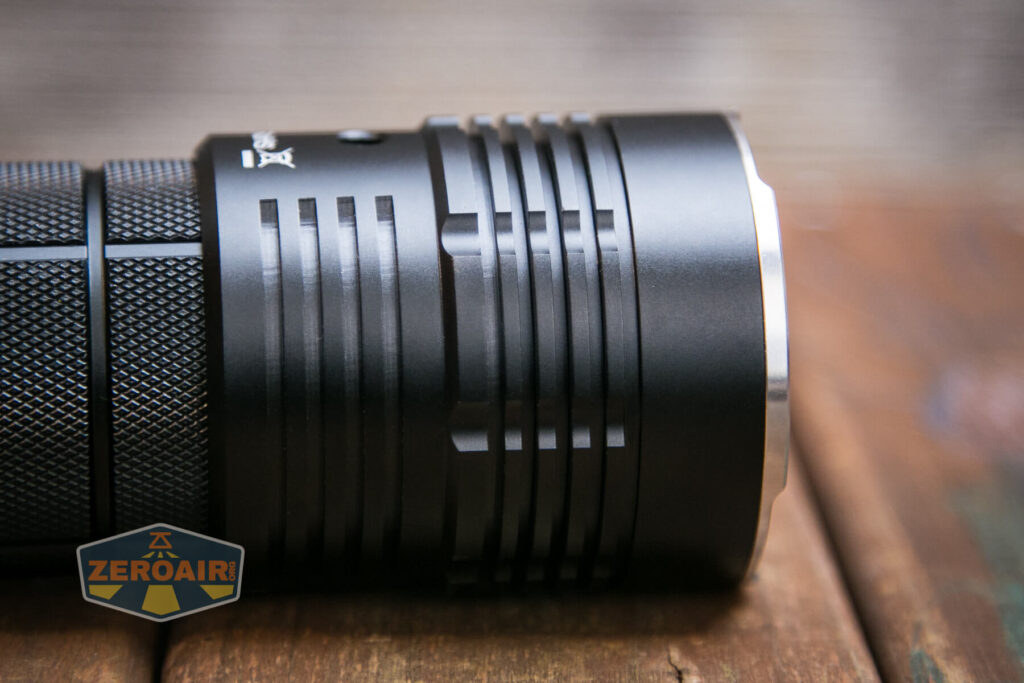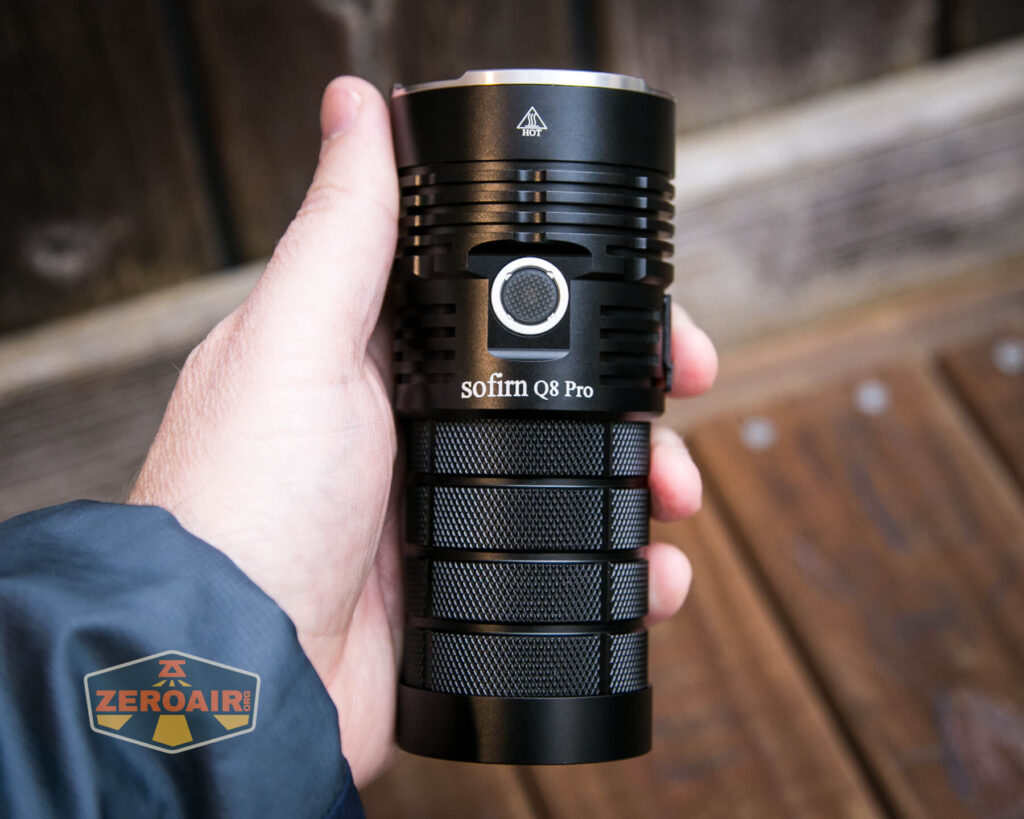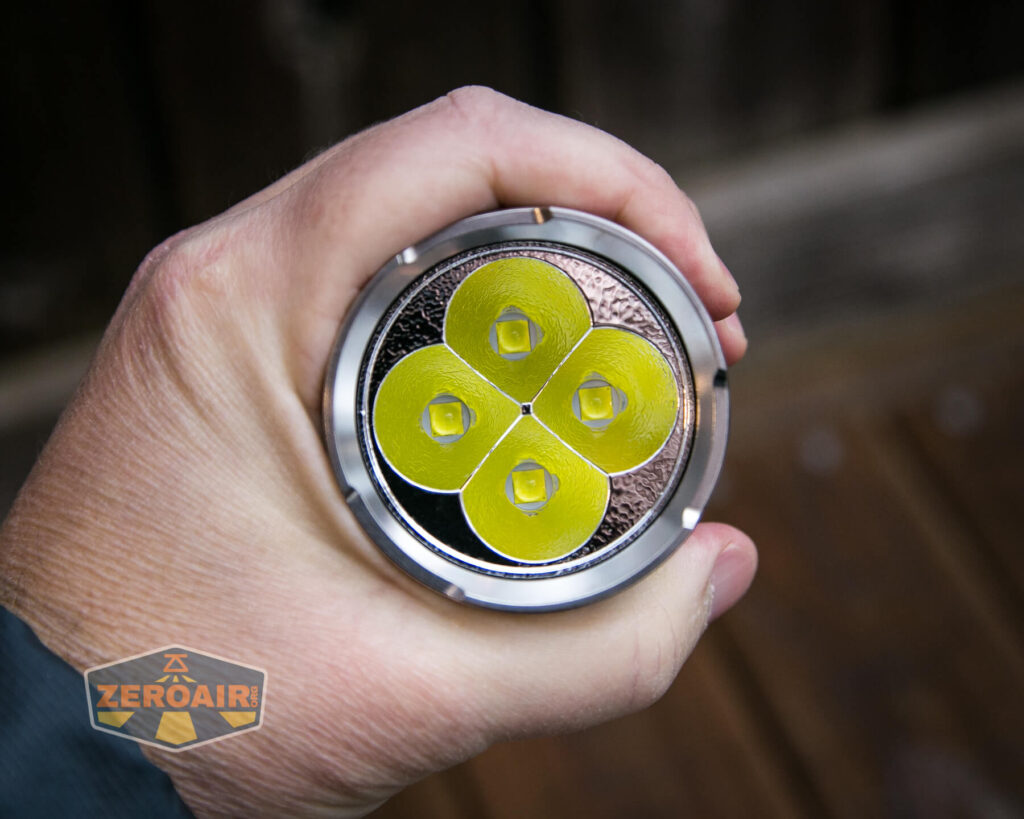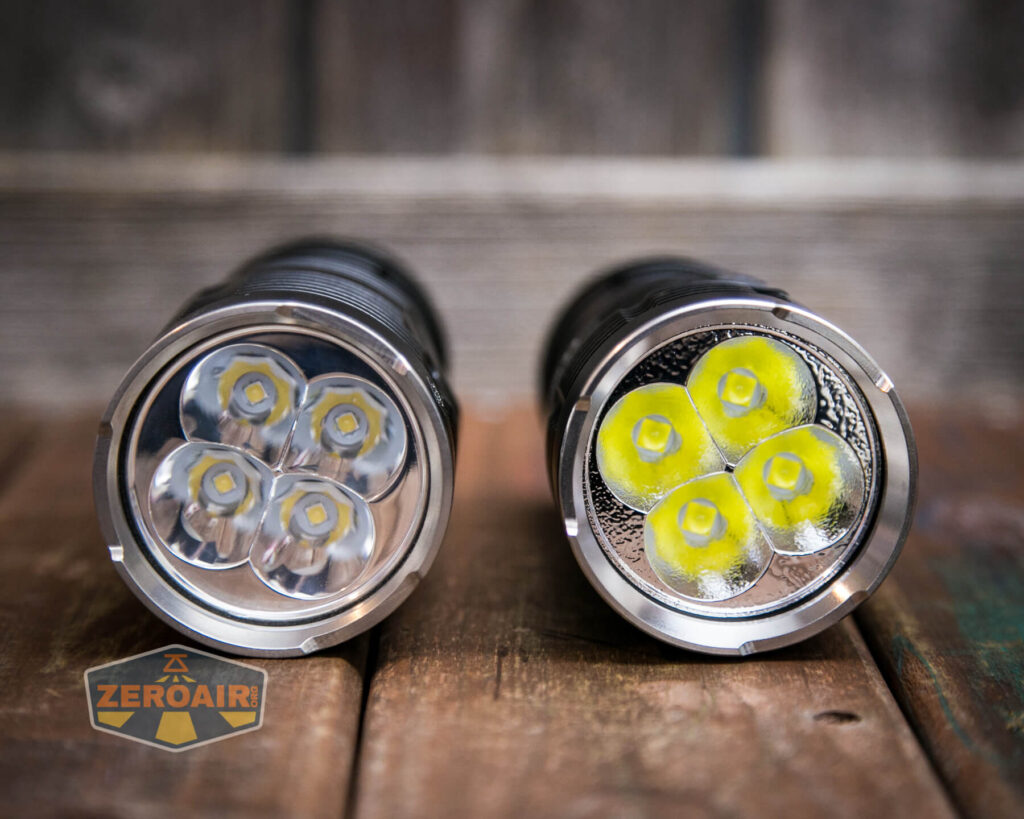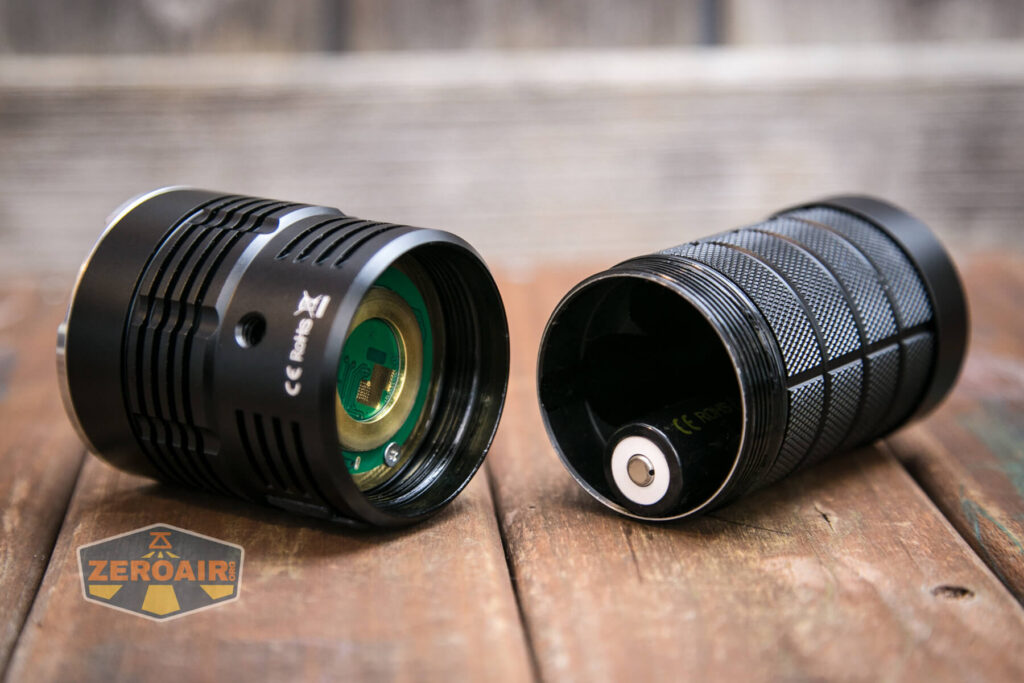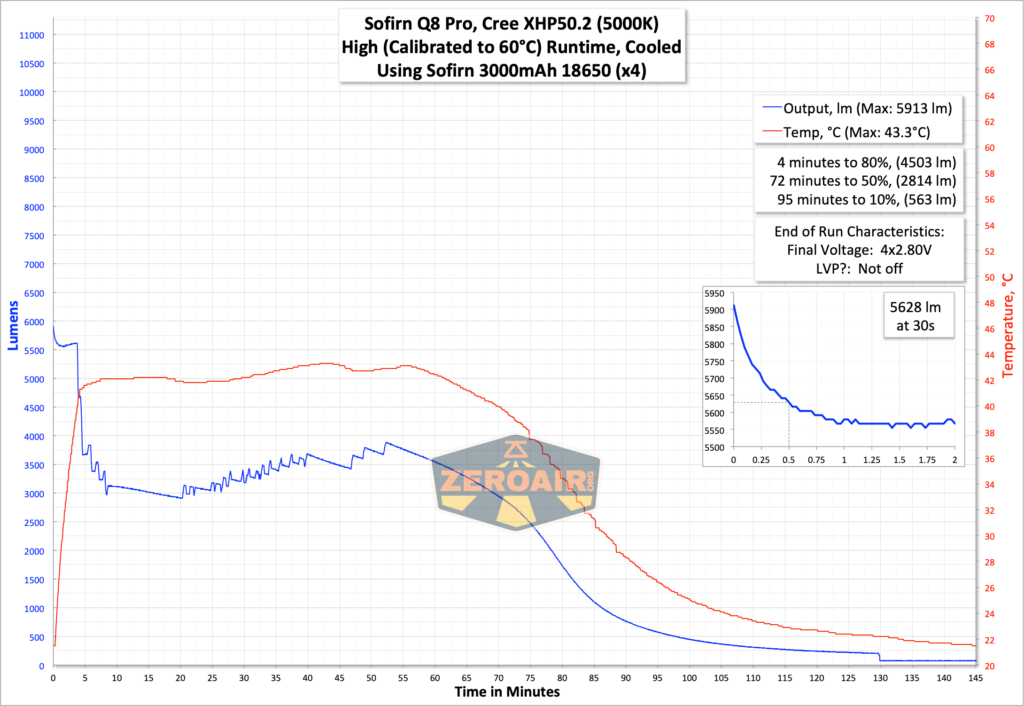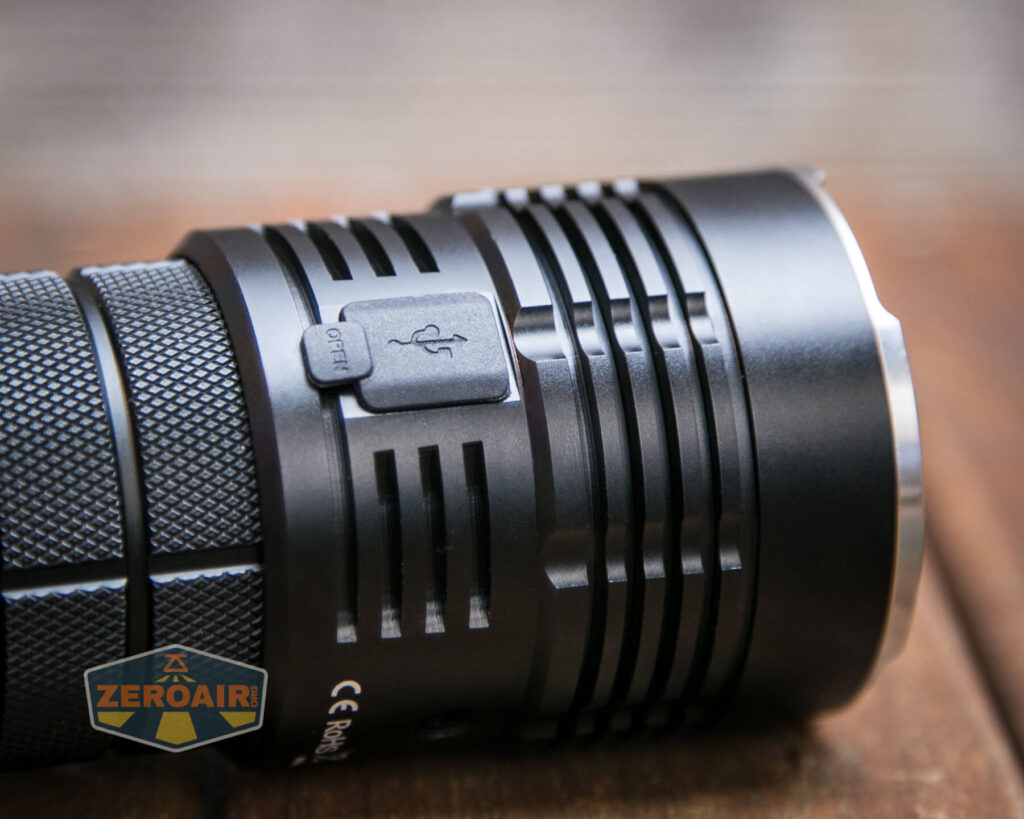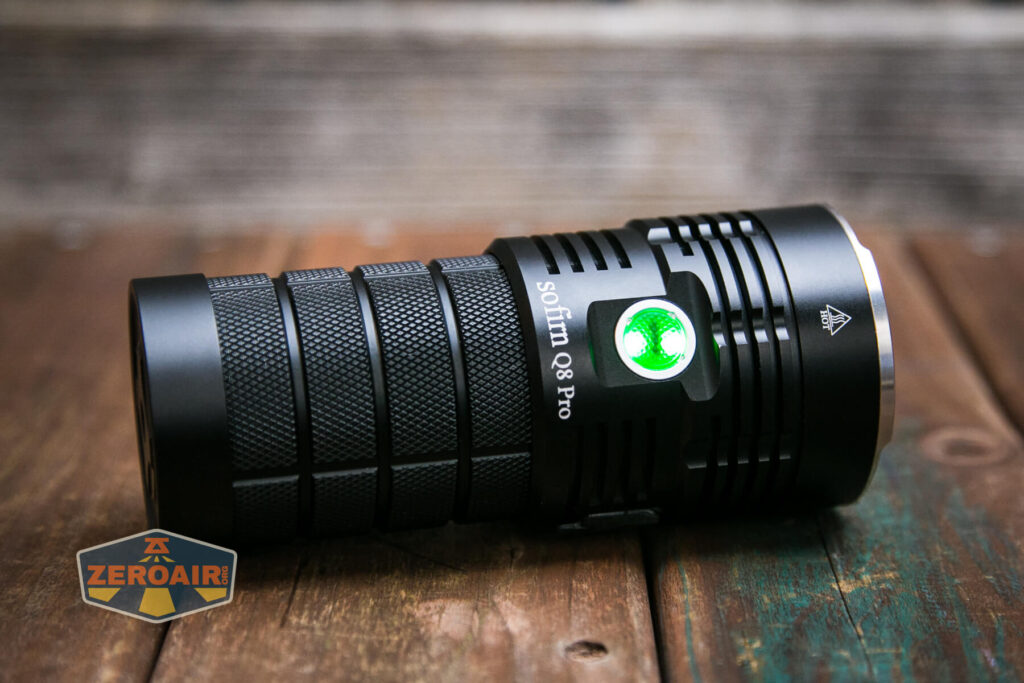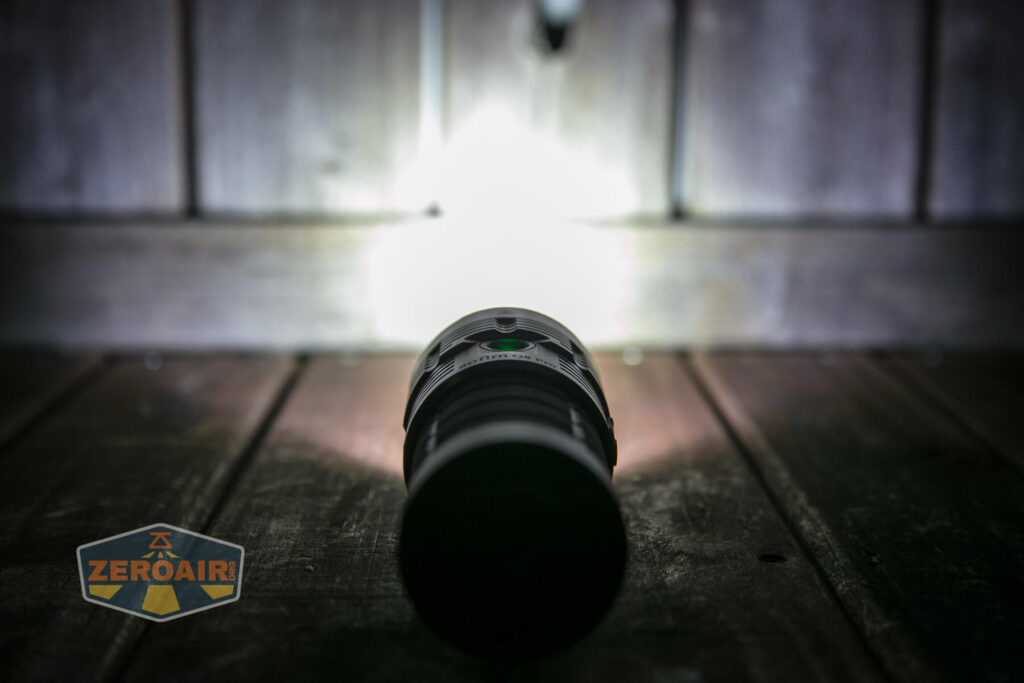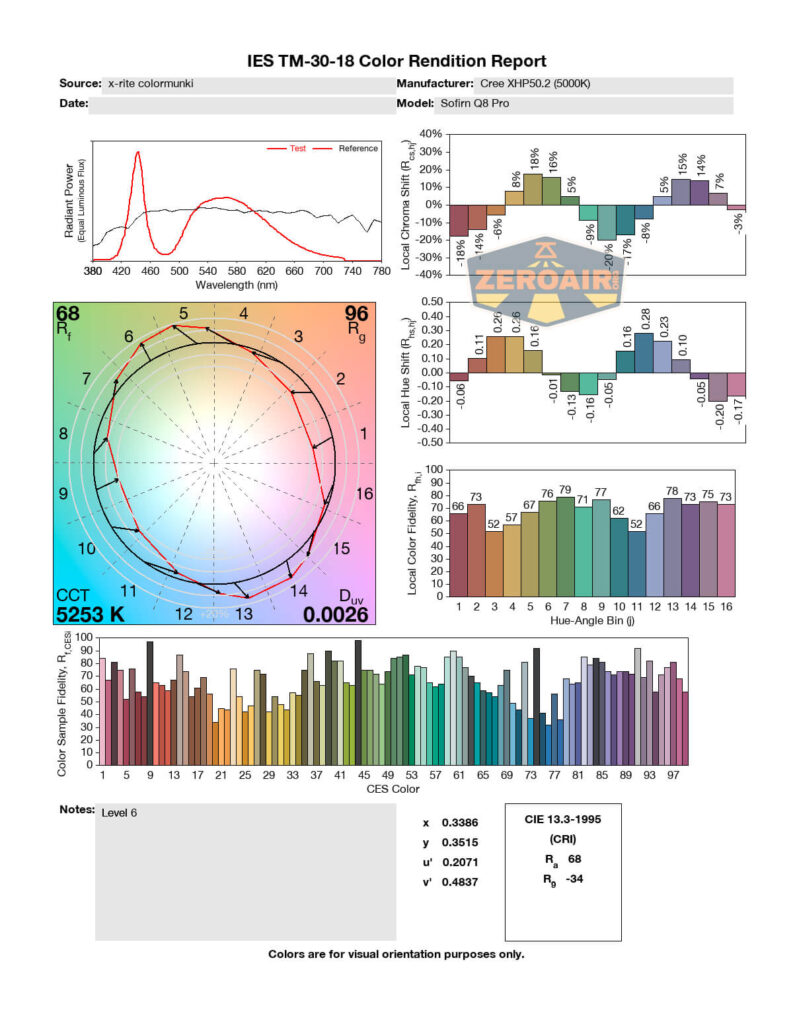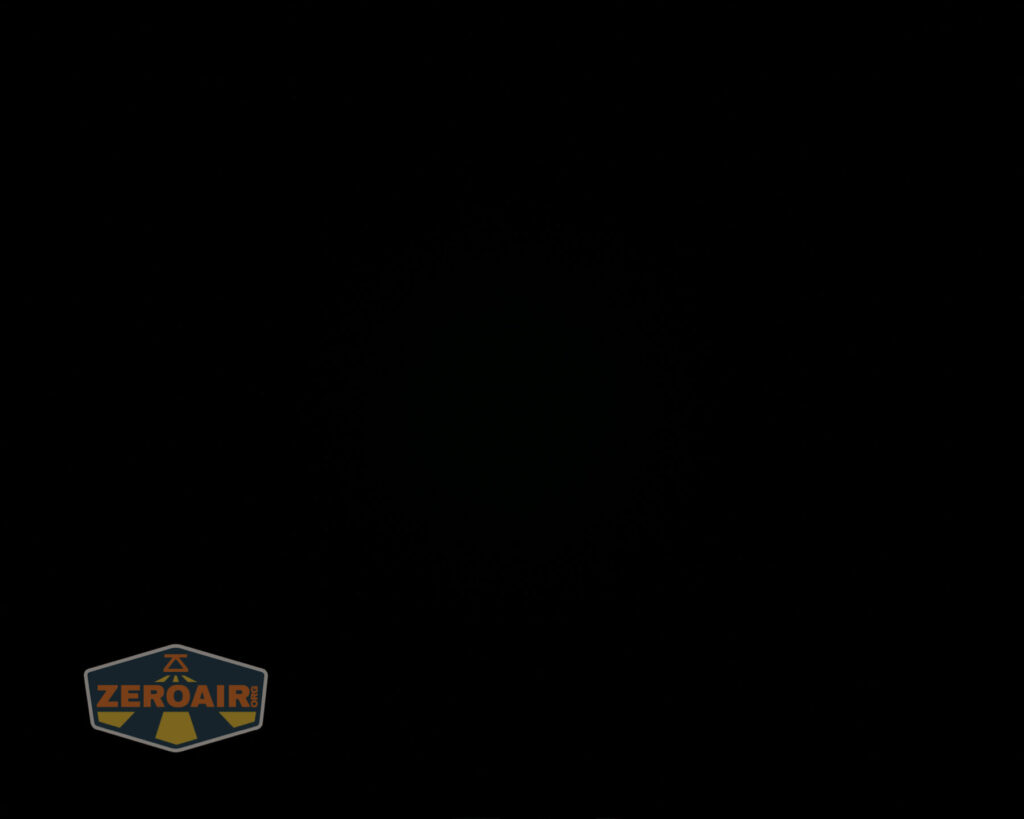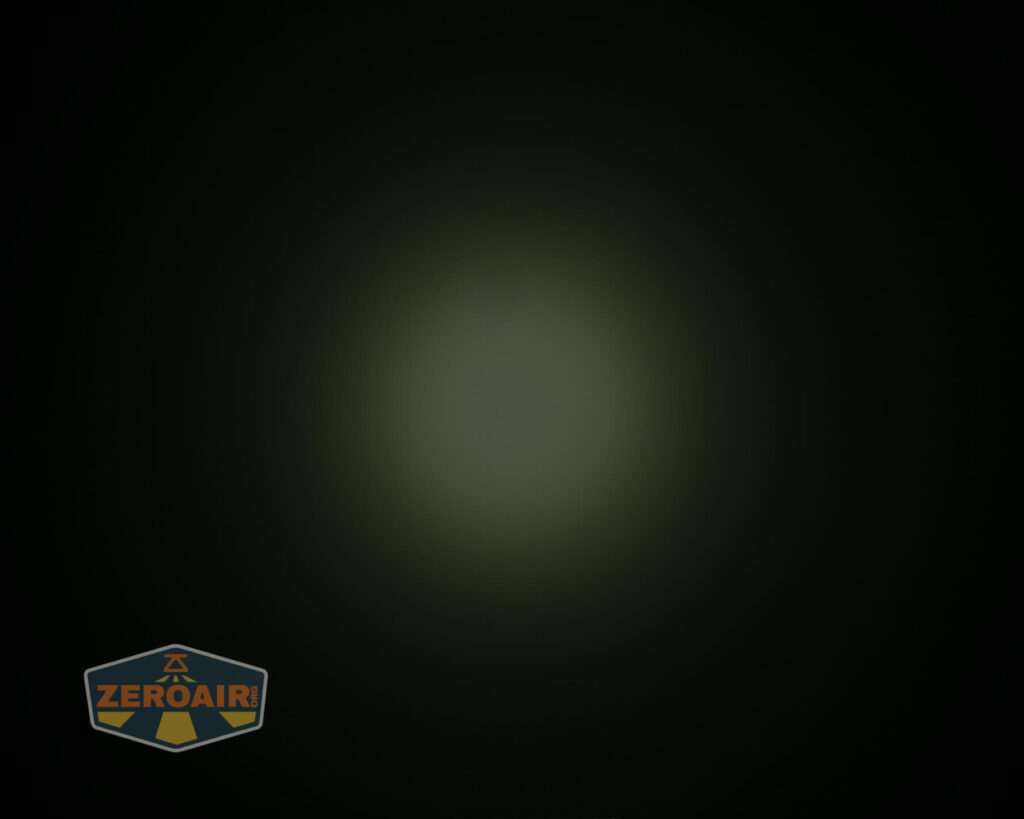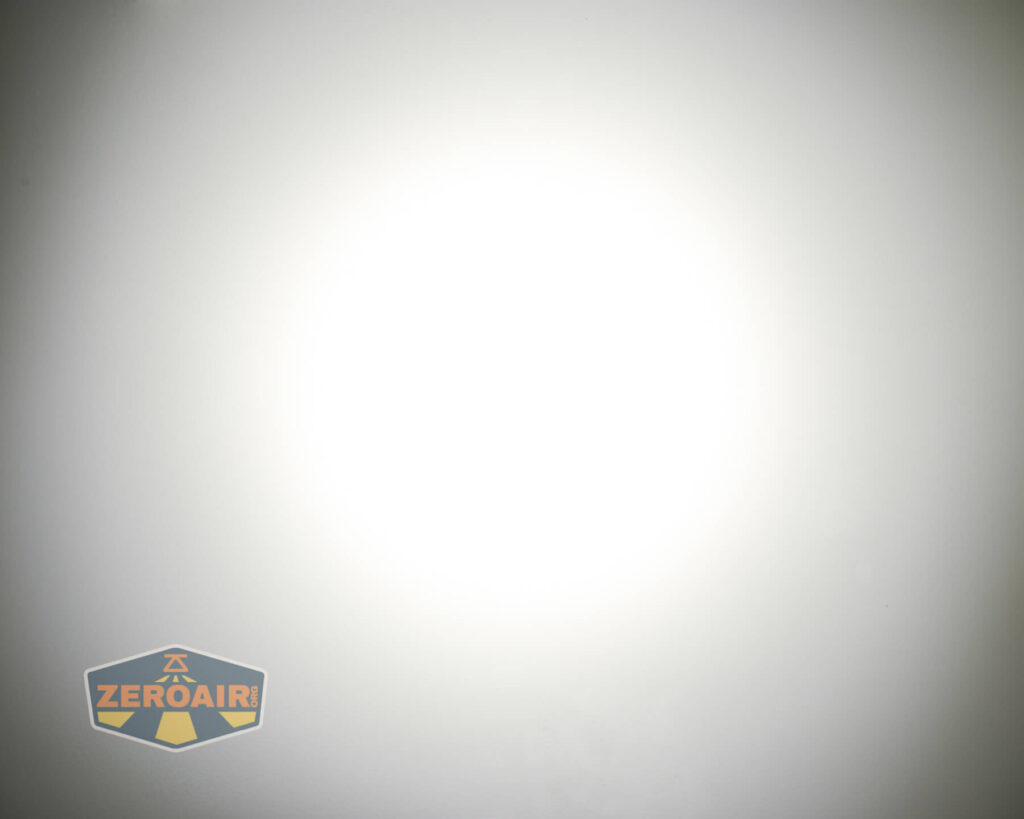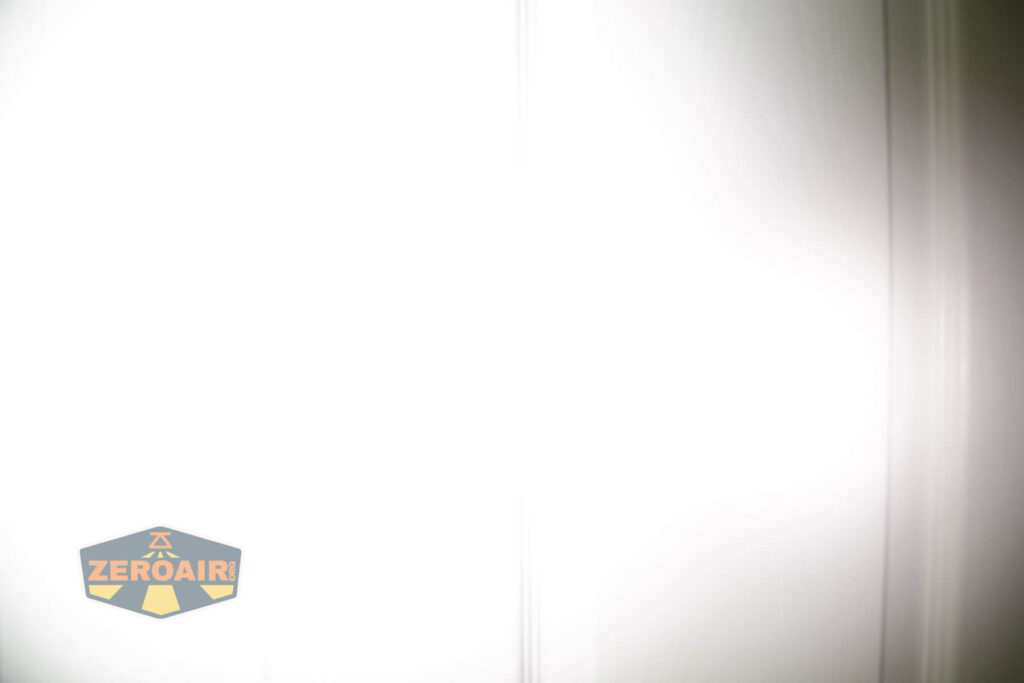Sofirn Q8 Pro Flashlight Review
The Sofirn Q8 Pro flashlight uses four 18650 cells and has four Cree XHP50.2 emitters. The e-switch has an indicating feature, too! Read on!
Official Specs and Features
Here’s a link to the Sofirn Q8 Pro flashlight product page.
Versions
While the link above shows there’s just one version available – there are clearly two. All other things are the same, but the listed version is 6500K, while my review copy is 5000K. That’s a great difference (as I’d say 5000K is much better!)
Three kit levels appear to be available but aren’t actually present in the item description for purchase. Those include the bare package without cells, a package with cells (as seen here), and a package with a diffuser and holster.
Price
These are currently listed at $90.99, and you might clip the extra 10% off coupon there on Sofirn’s website. If you prefer to purchase on Amazon, here’s a referral link to the Sofirn Q8 Pro on amazon!
Short Review
This Q8 Pro is a worthy update to the original Sofirn Q8 (which I also reviewed). The output is quite a bit higher and we see Andúril instead of Narsil (which is really just a personal preference you have to make). I’m very pleased Sofirn has a 5000K and that’s what I received. I hope you can figure out how to order that one too.
Long Review
The Big Table
| Sofirn Q8 Pro Flashlight (Set) | |
|---|---|
| Emitter: | Cree XHP50.2 (5000K) |
| Price in USD at publication time: | $90.99 |
| Cell: | 4×18650 |
| Turbo Runtime Graph | High Runtime Graph |
| LVP? | Switch to low |
| Switch Type: | E-Switch |
| Quiescent Current (mA): | 3.41 |
| On-Board Charging? | Yes |
| Charge Port Type: | USB-C |
| Charge Graph | |
| Power off Charge Port | With cells: lowest 5 modes (stepped) Without body: lowest 2 modes (stepped) |
| Claimed Lumens (lm) | 11000 |
| Measured Lumens (at 30s) | 10947 (99.5% of claim)^ |
| Candela per Lumen | 4.7 |
| Claimed Throw (m) | 400 |
| Candela (Calculated) in cd (at 30s) | 1892lux @ 4.596m = 39965cd |
| Throw (Calculated) (m) | 399.8 (100% of claim)^ |
| Claimed CCT | 5000 |
| Measured CCT Range (K) | 4450-5600 Kelvin |
| Item provided for review by: | Sofirn |
| All my Sofirn reviews! | |
^ Measurement disclaimer: Testing flashlights is my hobby. I use hobbyist-level equipment for testing, including some I made myself. Try not to get buried in the details of manufacturer specifications versus measurements recorded here; A certain amount of difference (say, 10 or 15%) is perfectly reasonable.
What’s Included
- Sofirn Q8 Pro Flashlight
- Spare o-rings (3, two types)
- Spare rubber switch cover
- Charge cable (USB to USB-C)
- Cells: Four 18650 button tops
- Manual and paperwork
Package and Manual
Build Quality and Disassembly
The build of this light is really great. It’s an oddly proportioned can light (long head), but very well built.
In the images below, you’ll note one difference in this Pro version and the previous versions. There’s on-board charging!
Build quality is good. The price point of these bigger (or “nicer”) Sofirn lights seems to be creeping up, and the MSRP on this one is around $130. I don’t expect you’d ever pay that, but even at $90 or so, it’s not inexpensive. That includes four 18650 cells though, which does make the price much more reasonable.
There are cooling fins all down the head, both on the head and neck area (around the switch).
I find that these fin edges to have anodizing that’s a bit frail. Just a bit of usage and the anno will probably begin to wear off. Below you can also see the stainless bezel. This bezel has a bit of shape, and that’ll allow light to escape when headstanding.
Nothing at all going on in this tailcap.
The body (and only the body) had knurling. It’s high-quality knurling with a good diamond shape.
Have a look at these threads. These threads are square-cut, anodized, lubed (maybe excessive lube), and quite long. All in all, this is a good setup.
The tailcap is removable, but there’s no point; it’s a dumb tailcap. I don’t believe it even carries any current. So while it’s removable (maybe in case you want to do maintenance on the inside or something), there’s no need to do so.
Inside the Sofirn Q8 Pro, you can see the body as the cell holder, and brass rings for contact on the head side. We’ll talk more about this later.
The body/cell holder has nice beefy springs for the negative terminal.
Here’s a better look at that cell holder. The cells are surrounded by aluminum very snugly. This seems like it might be just for holding the cells in place (and it is!) but it also serves to move the heat generated from the cells when the light is in high output directly into a fairly good mass of aluminum for heat management.
Size and Comps
Officially 134mm x 59mm (length x diameter).
Weight: 408g (without cells)
If the flashlight will headstand, I’ll show it here (usually the third photo). If the flashlight will tailstand, I’ll show that here, too (usually the fourth photo).
Here’s the test light with the venerable Convoy S2+. Mine’s a custom “baked” edition Nichia 219b triple. A very nice 18650 light.
And here’s the light beside my custom engraved TorchLAB BOSS 35, an 18350 light. I reviewed the aluminum version of that light in both 35 and 70 formats.
The Sofirn Q8 Pro is 2mm longer than the Sofirn Q8 (according to the spec sheet). The Q8 below is one of my very few personally modified lights – I did an emitter swap on this light to Samsung LH351d emitters (Dogfarts!). It’s better than original (6500K XP-L HI’s) and most importantly, I did the swap successfully!
Retention and Carry
The main means of retaining this light is with the tripod mount on the body/head, opposite the switch. There is no pouch or pocket clip or lanyard. A lanyard could be attached via the tripod mount, of course.
Tripod mounts on lights like this are great!
Power and Runtime
Button top cells are required for the BLF Q8 Pro. You also want high drain cells. These cells are in a parallel configuration, so keeping them married is not as important (as if they were in series) but it’s still a good idea to keep them very similar. That’s better for the cells and safer for you, so just do it.
The kit includes great cells, which are perfectly suitable for the Q8 Pro.
As stated above, they’re in a parallel configuration. That means the driver is expecting 4.2V maximum. Parallel means that the voltage input is the same voltage as one cell (4.2V max) but the capacity adds together from the for cells. The included cells are 3000mAh, so when full, the “battery” (cell holder) is really a 12,000mAh battery.
You may have read into what I wrote above and already considered this, but one cell will also work just fine in the Q8 Pro! You’ll be driving a single cell quite hard doing this, and maybe I’d recommend avoiding Turbo, but the light will certainly work absolutely fine on lower modes this way. (Any number of cells will work fine, too!)
Now for a few runtimes. Performance looks good!
Charging
An update to the Pro version of the Q8. The charge port is on the head near the switch. Sofirn used a USB-C charge port, and the cover is a simple press-in silicone cover.
An appropriate cable is included – USB to USB-C.
Here are a couple of charge graphs. I tested with USB to USB-C (as intended by Sofirn based on the cable they included.) I also tested with USB-C to USB-C, and that works a bit better I think.
Powerbank
One more big feature of this updated Sofirn Q8 Pro is that the USB-C port (which is used for charging, as seen above) can also serve as a USB-C output, making this flashlight also a powerbank!
I didn’t test this feature too much but I can say a few things. First, and seen most easily on the second graph below, is that the USB-C port can output well over 3A.
In fact, the output can go up to 4A if you discount the voltage drop – at 4A the voltage (output) drops to around 4V. That’s “out of spec” for USB, so let’s only consider what the output can be while around 5V. At 5V, the Q8 Pro can steadily output 3A. And not just a small bit of 3A output. It’ll output 3A until the powerbank shuts off with low voltage protection. In my case, that was around 3.11V. This is actually completely perfect, and the ideal scenario.
In case you want to see what happens when the output shuts off, you can see that below. I manually forced the output to go back on, and it’ll shut off pretty quickly after that. It will not output 3A, but it’ll also not output any current – it seems properly shut off.
That’s a lot of text just to say that the powerbank feature of the Q8 Pro is great!
Modes and Currents
| Mode | Mode Claimed Output (lm) | Claimed Runtime | Measured Lumens | Tailcap Amps |
|---|---|---|---|---|
| 9 | 11000 | – | 10947 | ^ |
| 8 (Highest of Stepped) | – | – | 5628 | ^ |
| 7 | – | – | 2759 | 2.37 |
| 6 | – | – | 993 | 1.14 |
| 5 | – | – | 173 | 0.32 |
| 4 | – | – | 68 | 0.13 |
| 3 | – | – | 17 | 0.03 |
| 2 (Lowest of Stepped) | – | – | 1.2 | 4.82mA |
| 1 (Lowest of Ramping) | – | – | 0.2 | 2.01mA |
^ Power supply became unreliable at this level.
The quiescent current is 3.4mA with the green switch lit.
Pulse Width Modulation
We do see PWM on most of the modes here. I’d only really consider it visible on the very lowest mode. In all these series photos below, the order is as follows: Lowest is the lowest when in ramping mode. Next are all the stepped modes. Finally (the right-most) is the output when the switch is double-clicked with the light on.
For reference, here’s a baseline shot, with all the room lights off and almost nothing hitting the sensor. Also, here’s the light with the worst PWM I could find. I’m adding multiple timescales, so it’ll be easier to compare to the test light. Unfortunately, the PWM on this light is so bad that it doesn’t even work with my normal scale, which is 50 microseconds (50us). 10ms. 5ms. 2ms. 1ms. 0.5ms. 0.2ms. In a display faster than 0.2ms or so, the on/off cycle is more than one screen, so it’d just (very incorrectly) look like a flat line. I wrote more about this Ultrafire WF-602C flashlight and explained a little about PWM too.
User Interface and Operation
There’s a single indicating side e-switch on this Q8 Pro. It’s a responsive and clicky button. The indicating aspect is quite nice, and also configurable.
Unlike the Sofirn Q8 which has NarsilM, this Q8 Pro has the Andúril2 user interface.
In stock configuration, the switch emitters will be green when the light is off.
The switch is configurable, according to the manual. You will need to be in Advanced UI to configure the switch!
The light ships with Andúril2! I love it, I think it’s an improvement over the first iteration(s). There are some things some users might not love about it, but I think overall it’s much more approachable. I will note though that the nomenclature might be a bit confusing – the light (all lights with Andúril2) ships in Simple UI. This is not Muggle Mode. You may think “well duh” and by now you’ve already seen the blistering runtime on turbo of Simple, so you get it. But just be aware, don’t hand this light to the uninitiated thinking they won’t set their hand on fire while using Simple UI. Here is where I’d tell you how to switch to muggle mode. There is no muggle mode.
Here’s a UI table! This table is directly from ToyKeeper’s Andúril2 manual, which you can view here:
http://toykeeper.net/torches/fsm/anduril2/anduril-manual.txt
I am putting this in a table here with ToyKeeper’s permission. Thanks, TK! This is so much better than me writing it because it’s more reliable, and I completely trust its accuracy (at least, if I can paste accurately). I’m breaking it up a little differently than ToyKeeper did, though I certainly understand why it was done her way originally.
First, the table for Either User Interface. These actions work whether you’re in Simple or Advanced UI.
| State | Action | Result |
|---|---|---|
| Off | 1C | On (ramp mode, memorized level) |
| Off | 1H | On (ramp mode, floor level) |
| Off | 2C | On (ramp mode, ceiling level) |
| Off | 3C | Battcheck mode |
| Off | 4C | Lockout mode |
| Off | 13H | Factory reset (on some lights) |
| Off | 15+C | Version check |
| Ramp | 1C | Off |
| Ramp | 1H | Ramp (up, with reversing) |
| Ramp | 2H | Ramp (down) |
| Ramp | 3H | Tint ramping (on some lights) |
| Ramp | 3H | Momentary turbo (on lights without tint ramping) |
| Ramp | 4C | Lockout mode |
| Lockout | 1C/1H | Momentary moon (lowest floor) |
| Lockout | 2C/2H | Momentary moon (highest floor, or manual mem level) |
| Lockout | 4C | On (ramp mode, memorized level) |
| Lockout | 4H | On (ramp mode, floor level) |
| Lockout | 5C | On (ramp mode, ceiling level) |
| Batt check | 1C | Off |
A table for only Simple User Interface:
| State | Action | Result |
|---|---|---|
| Off | 2H | On (momentary ceiling level) |
| Off | 10H | Disable Simple UI |
| Ramp | 2C | Go to/from ceiling |
A table for only Advanced (aka “Full”) User Interface:
| State | Action | Result |
|---|---|---|
| Off | 2H | On (momentary turbo) |
| Off | 3H | Strobe mode (whichever was used last) |
| Off | 5C | Momentary mode |
| Off | 7C | Aux LEDs: Next pattern Switch LEDs: Next option |
| Off | 7H | Aux LEDs: Next color |
| Off | 10C | Enable Simple UI |
| Off | 10H | Simple UI ramp config menu (1: floor, 2: ceiling, [3: steps]) |
| Ramp | 2C | Go to/from ceiling (or turbo if at ceil already) |
| Ramp | 3C | Change ramp style (smooth / stepped) |
| Ramp | 5C | Momentary mode |
| Ramp | 5H | Sunset timer on, and add 5 minutes |
| Ramp | 7H | Ramp config menu (1: floor, 2: ceiling, [3: steps]) |
| Ramp | 10C | Turn on manual memory and save current brightness |
| Ramp | 10H | Manual memory config menu (1: off, 2: set timeout) |
| Lockout | 7C | Aux LEDs: Next pattern |
| Lockout | 7H | Aux LEDs: Next color |
| Lockout | 10H | Auto-lock config menu (1: set timeout) |
| Strobe (any) | 1C | Off |
| Strobe (any) | 2C | Next strobe mode |
| Strobe (any) | 3H | Tint ramping (on some lights) |
| Strobe (any) | 5C | Momentary mode (using current strobe) |
| Candle | 1H/2H | Brighter / dimmer |
| Candle | 5H | Sunset timer on, add 5 minutes |
| Party strobe | 1H/2H | Faster / slower |
| Tactical strobe | 1H/2H | Faster / slower |
| Biking | 1H/2H | Brighter / dimmer |
| Lightning | 1H | Interrupt current flash or start new one |
| Batt check | 2C | Next blinky mode (Temp check, Beacon, SOS) |
| Batt check | 7H | Voltage config menu |
| Temp check | 1C | Off |
| Temp check | 2C | Next blinky mode (Beacon, SOS, Batt check) |
| Temp check | 7H | Thermal config menu |
| Beacon | 1C | Off |
| Beacon | 1H | Configure beacon timing |
| Beacon | 2C | Next blinky mode (SOS, Batt check, Temp check) |
| SOS | 1C | Off |
| SOS | 2C | Next blinky mode (Batt check, Temp check, Beacon) |
| Momentary | Any | On (until button is released) |
| Momentary | Disconnect power | Exit Momentary mode |
| Config menus | Hold | Skip current item with no changes |
| Config menus | Release | Configure current item |
| Number entry | Click | Add 1 to value for current item |
To be completely honest, I’m not entirely sure yet what’s the best way to tell if you’re in Simple UI or Advanced UI. Based on what I see here and with the light in hand, I think the fewest-clicks way will be 3 clicks from on (technically “Ramp” in the table, but I think “On” is accurate.) This action – 3C from Ramp – in Advanced UI will iterate smooth or stepped. In Simple UI, this action will do nothing. There are other ways, though. For example, double-clicking from the top of the ramp will either do nothing or go to Turbo. If it does nothing, then you’re in Simple. If it goes to 11, then you’re in Advanced. One more reliable way to check between Simple and Advanced is to enter Batt Check (3C from off) then see what 2C does. In Simple, the light will just turn off. In Advanced, the light will go to the temperature check.
Another great way to tell, thanks to a reader is to see what the lowest level of ramping is. Advanced UI has a quite low low. Simple UI has a much higher “lowest level.”
LED and Beam
Sofirn has used four Cree XHP50.2 emitters in the Q8 Pro. Mine are 5000K, but the most available option is 6500K.
Each emitter has its own orange peel reflector.
LED Color Report (CRI and CCT)
In all these series photos below, the order is as follows: Lowest is the lowest when in ramping mode. Next are all the stepped modes. Finally (the right-most) is the output when the switch is double-clicked with the light on.
While we do see the CCT creep up as the output increase (which we expect), it’s still well under 6500K (at a max of around 5500K). This is good (and acceptable!)
Beamshots
In all these series photos below, the order is as follows: Lowest is the lowest when in ramping mode. Next are all the stepped modes. Finally (the right-most) is the output when the switch is double-clicked with the light on.
These beamshots are always with the following settings: f8, ISO100, 0.3s shutter, and manual 5000K exposure.
Tint vs BLF-348 (KillzoneFlashlights.com 219b version) (affiliate link)
I keep the test flashlight on the left, and the BLF-348 reference flashlight on the right. In all these series photos below, the order is as follows: Lowest is the lowest when in ramping mode. Next are all the stepped modes. Finally (the right-most) is the output when the switch is double-clicked with the light on.
I compare everything to the KillzoneFlashlights.com 219b BLF-348 because it’s inexpensive and has the best tint!
Conclusion
What I like
- The 5000K option is great (and thank you to Sofirn for including it)
- USB-C charging works well
- Andúril2 can be considered as an upgrade over Narsil
- Tripod mount
- Switch brightness can be changed (too bright by default)
- Works (somewhat) off USB-C power (Great for tripod usage without the body, or without cells)
What I don’t like
- Cost creep – around $90
Notes
- This content originally appeared at zeroair.org. Please visit there for the best experience!
- For flashlight-related patches, stickers, and gear, head over to PhotonPhreaks.com!
- Please use my amazon.com referral link to help support zeroair.org!
- Please support me on Patreon! I deeply appreciate your support!











